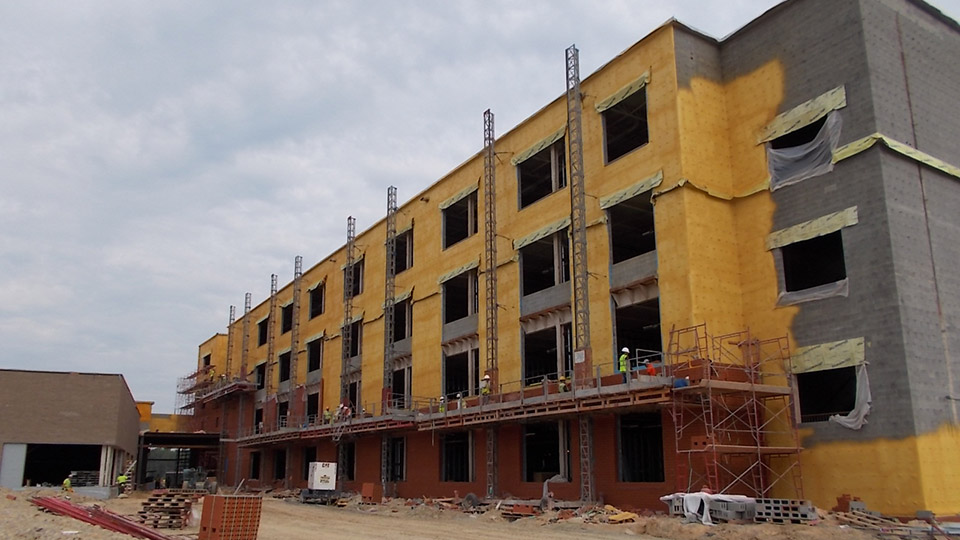
Shown is Apex Friendship High School in Apex, N.C., near Raleigh. This is a new facility using 290,000 bricks from Palmetto Brick Co. and 350,000 CMUs from Old Castle Adams Products. The walls are 60 feet high with CMU back-up, and spray foam insulation and brick veneer comprising the finished skin. The mason contractor is Joyner Masonry Works. The construction manager is Balfour Beatty/Metcon JV.